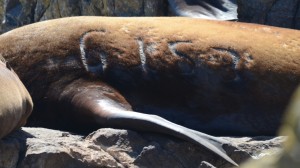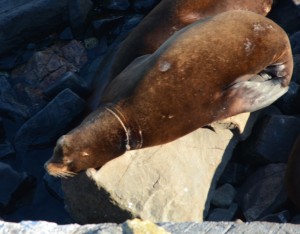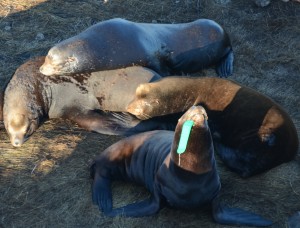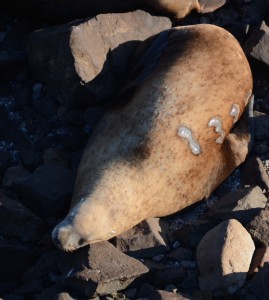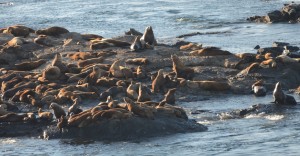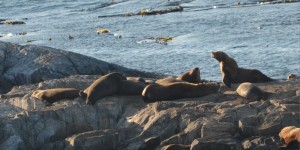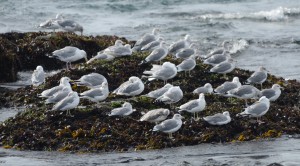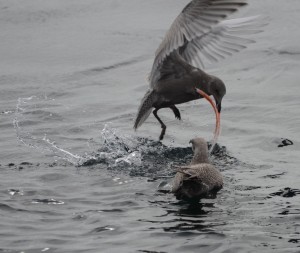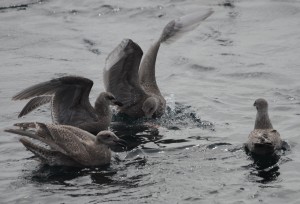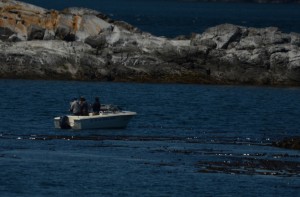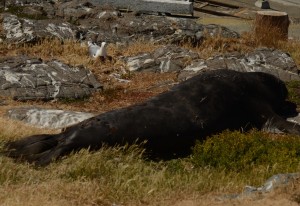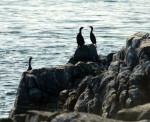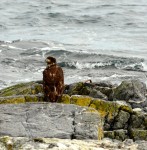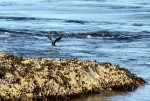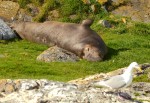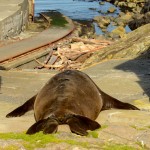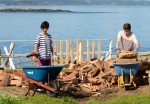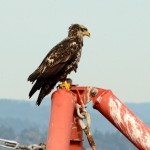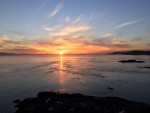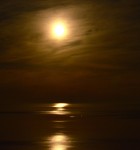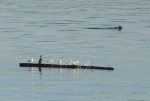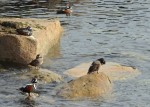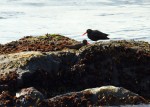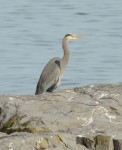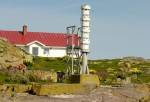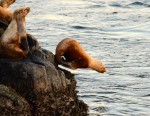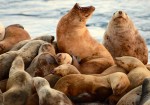Fog gave way to sunshine by early afternoon and the west wind continued to increase from ~10 knots in the morning to 18 knots by mid-afternoon. The barometer, which has been sliding down stepwise since mid-day Monday made another step down today but remains relatively high at 1016 hPA. The forecast for Central Juan de Fuca is for more of the same but sunnier.
Except for Island Explorer, which did go through Middle Channel against the current today, there was no whale watching activity here today and no other vessels were noted in reserve.
More post-breeding gulls from other breeding areas are showing up daily including California, Heerman’s, and occasional Herring and Ring-Billed Gulls. Glaucous-winged Gull adults that are still feeding chicks are looking battle weary and changing into winter plumage. Some of their heads are a mess from constant begging and pecking by the young ones. There are still territorial disputes going on between adults and young gulls that are not their own. Fresh remains of Glaucous-winged Gulls are seen daily in different spots so I guess in a way those adults with young are the lucky ones. The gulls that are flying are feeding on salmon bits provided by the sea lions and many of the feeding flocks here are dominated by juvenile Glaucous-winged Gulls.
The sea lions are firmly into their moult now as well and spending lots of time ashore. Middle Rock is almost exclusively Steller Sea Lions except for a small hold-out at the top by Northern Elephant Seals. Large male Stellers are encroaching on their space again today but it appears more about finding a quiet place to sleep than the more aggressive interactions I saw with younger male Stellers who were scared off yesterday. Turbine Rock is also mostly Stellers while Great Race and South Islands are populated by both species together. The Harbour Seals are hauled out wherever there is a bit of separate space on North, West and South Rocks with a few on Turbine and Middle as well.
I continue to get brand, tag wound and entanglement photos of the sea lions while they are ashore. I am curious about the biomass hauled out here right now. It is a pretty incredible concentration and one of the reasons that it is a special area worthy of conservation as an Ecological Reserve. It is an honour to be here and witness what goes on a daily basis. Some of the other conservation reasons are underwater and less accessible but we are working on getting camera 2 back up and running to give a glimpse into that world too.
Chores today were routine maintenance and there were no visitors.

